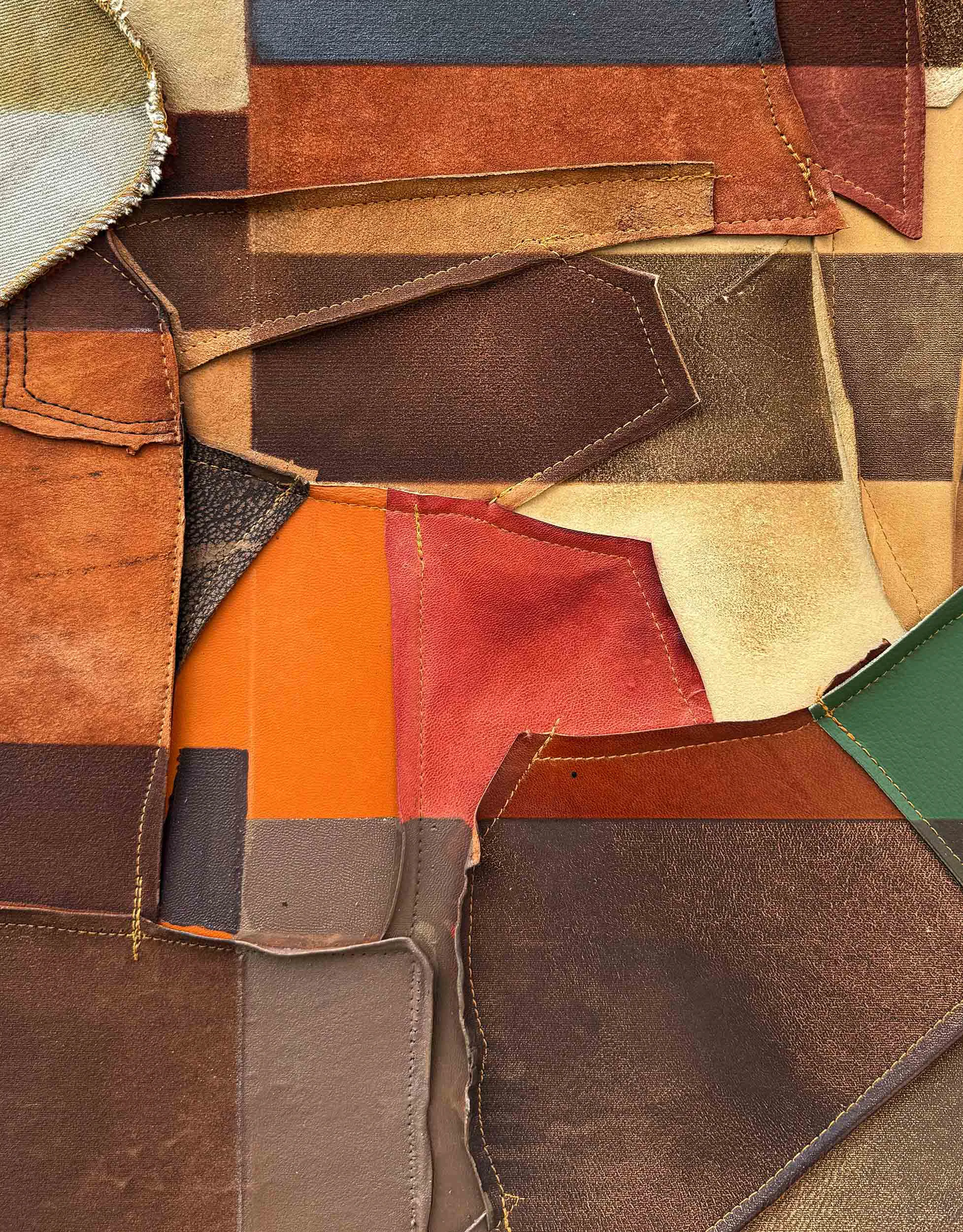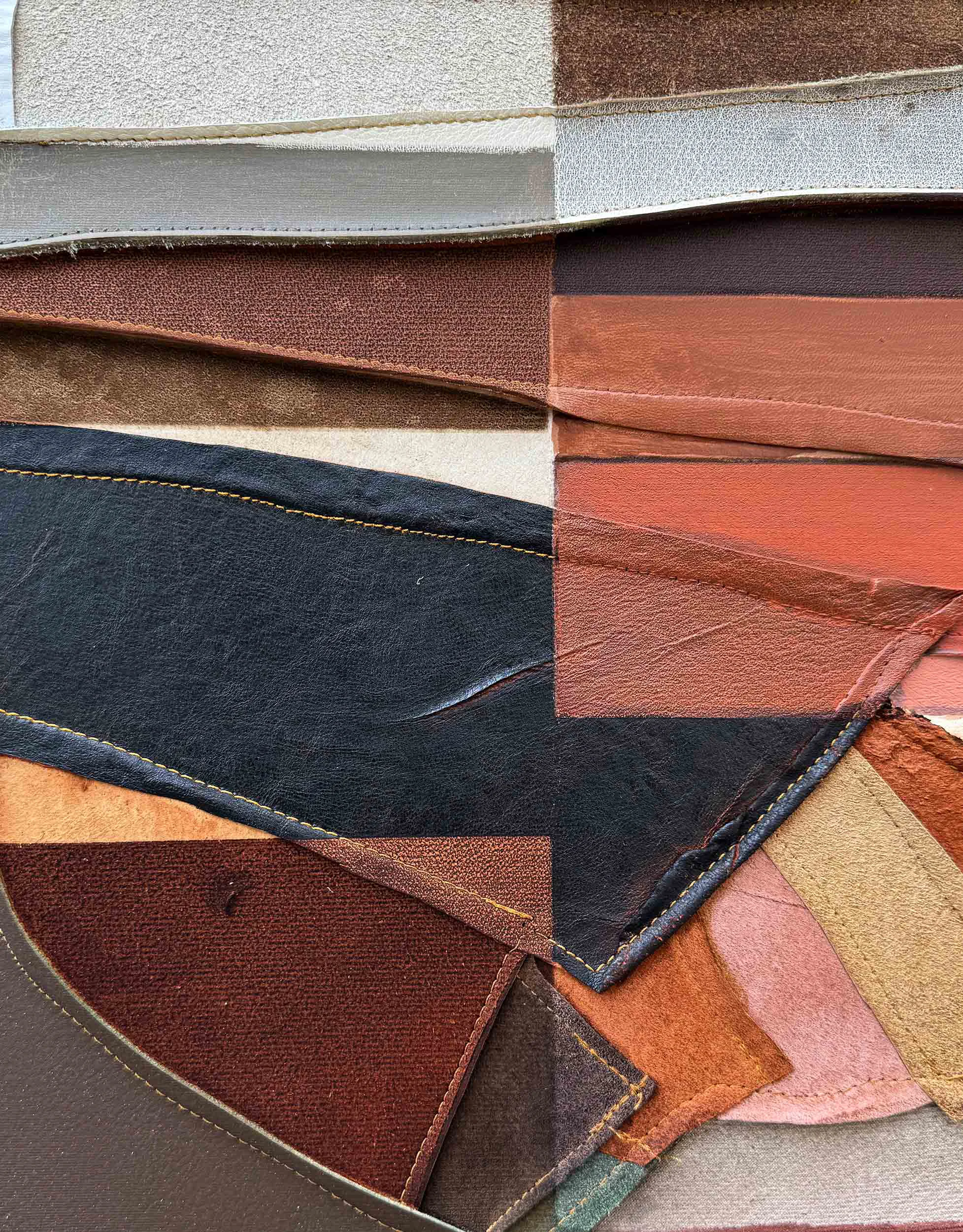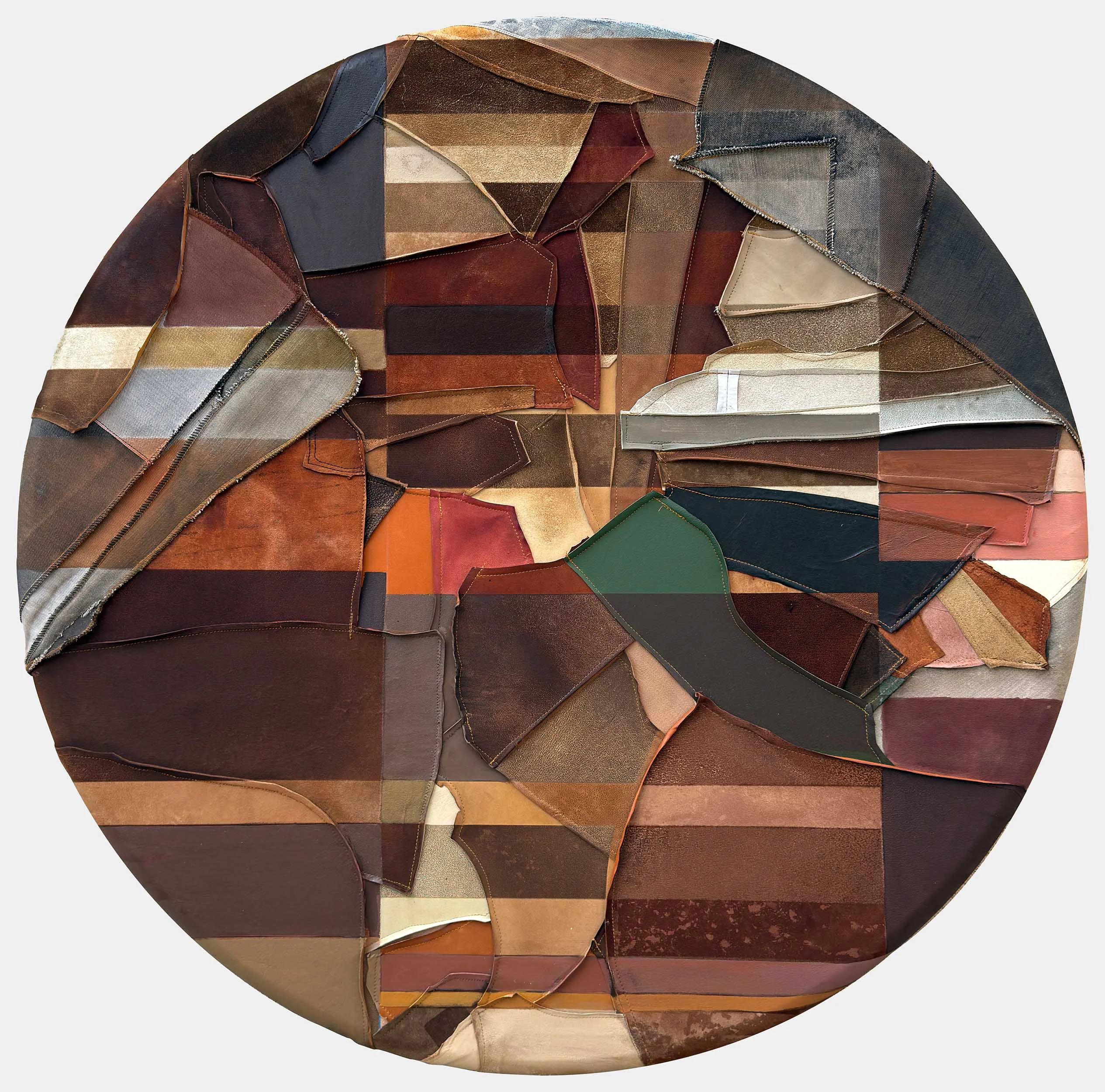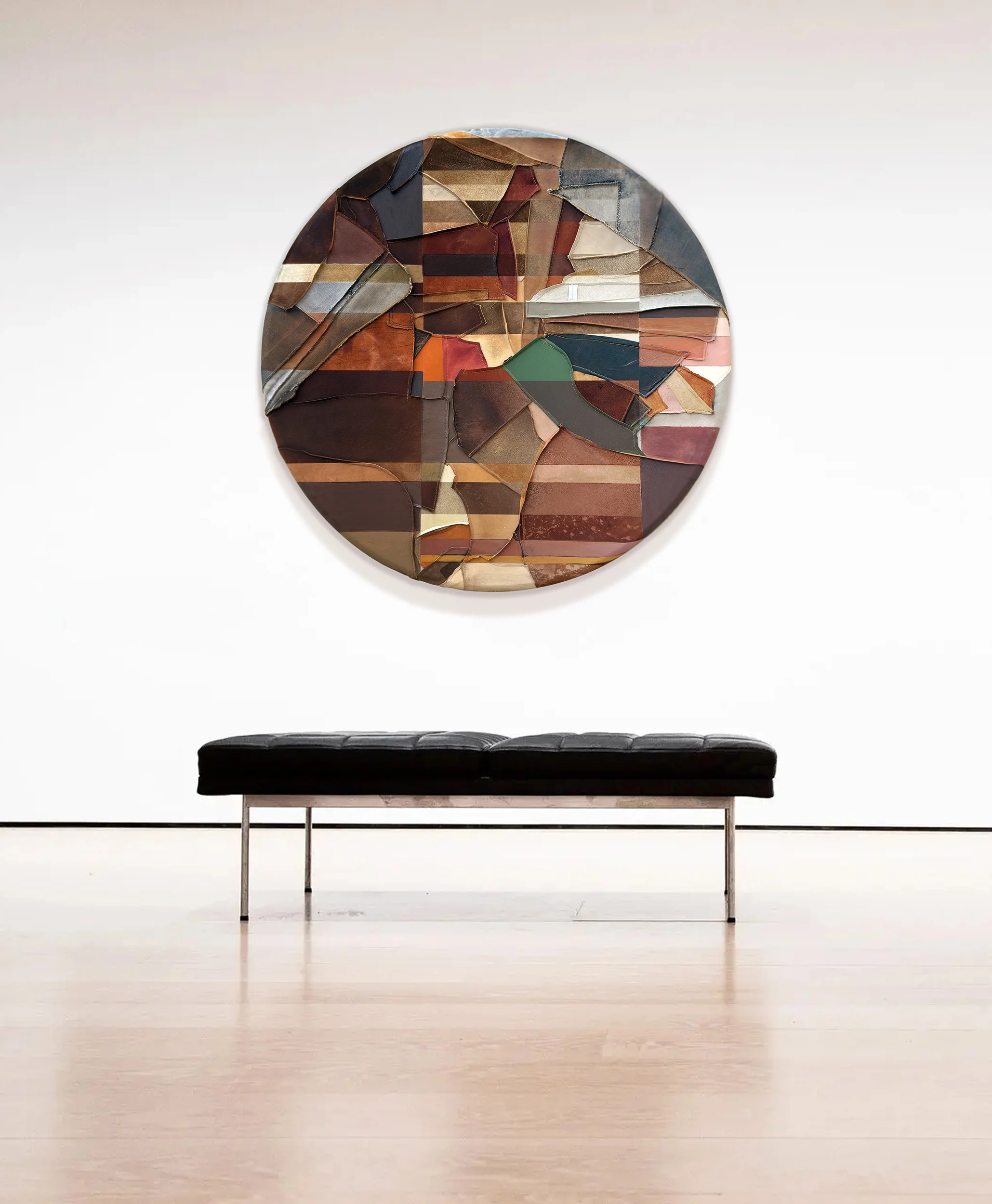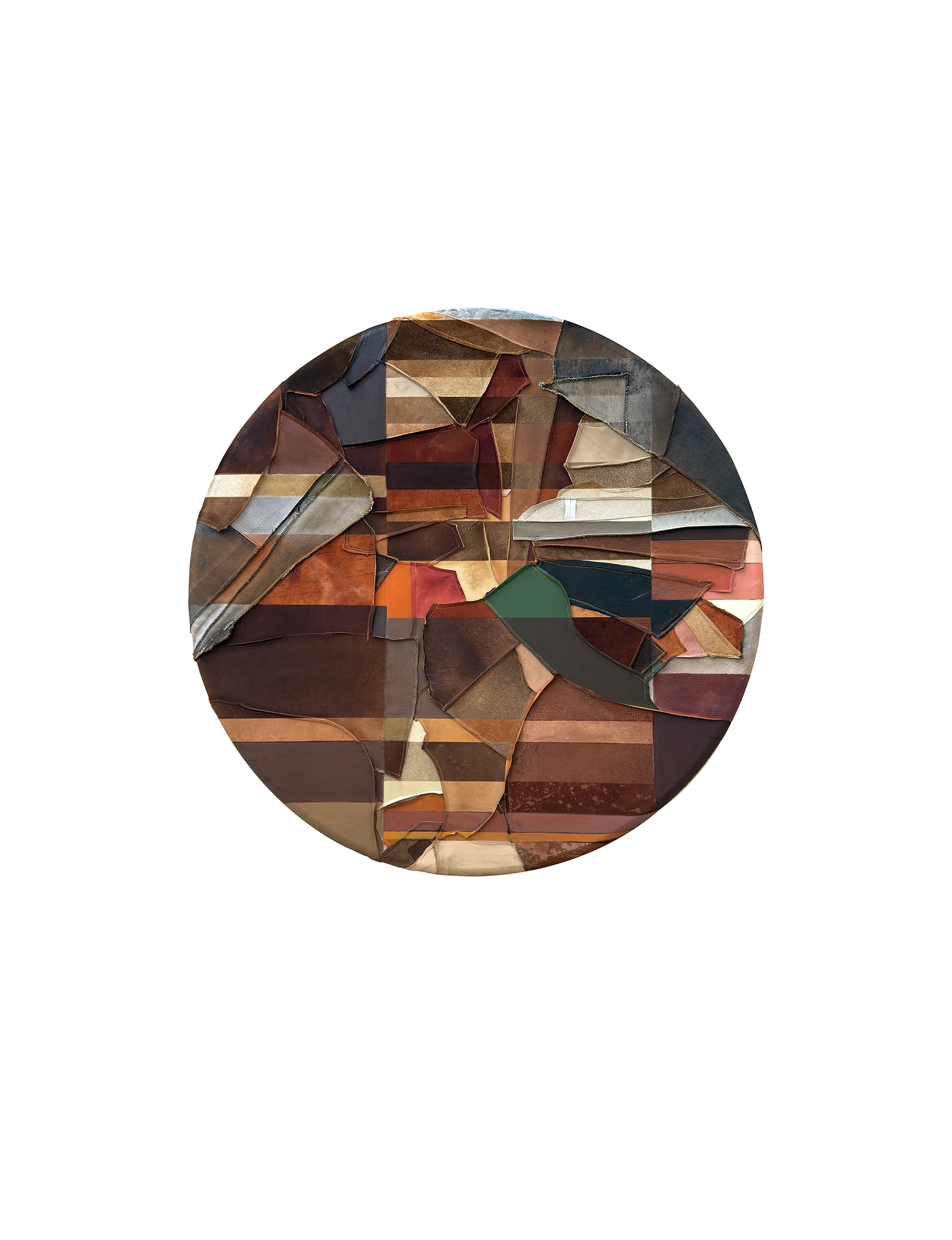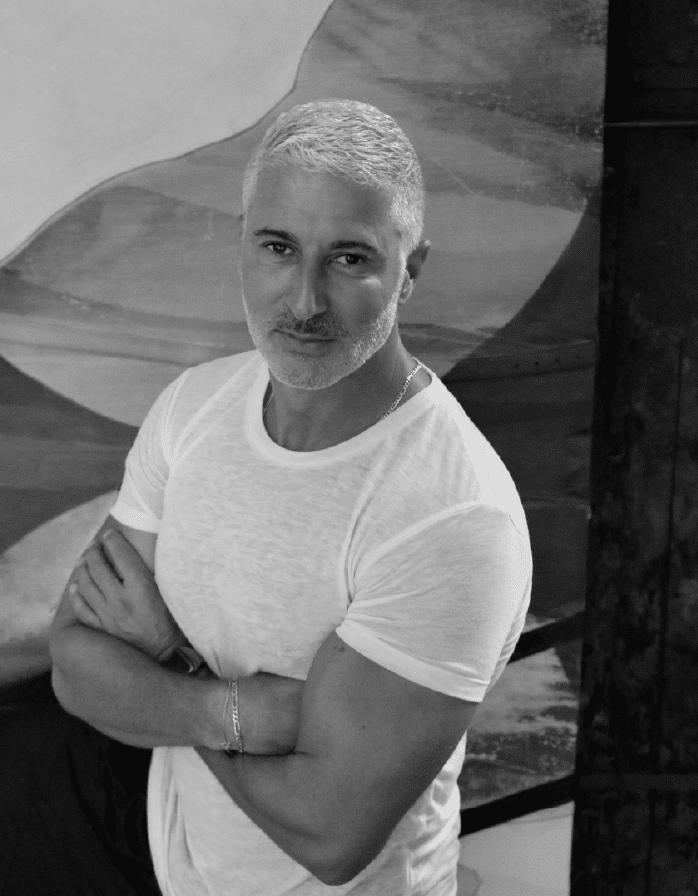BY RONEN AZULAY
UNIQUE WORK
PULSE COLLECTION
YEAR 2025
MIXED MEDIA ON REPURPOSED DENIM, TEXTILES AND RECYCLED LEATHER
| IN | Ø | 40 | ||||||||
| CM | Ø | 101.6 |
HANDCRAFTED IN AMERICA
AVAILABLE
LOCATION NEW JERSEY, USA
BIOGRAPHY
DOWNLOAD PRODUCT INFO
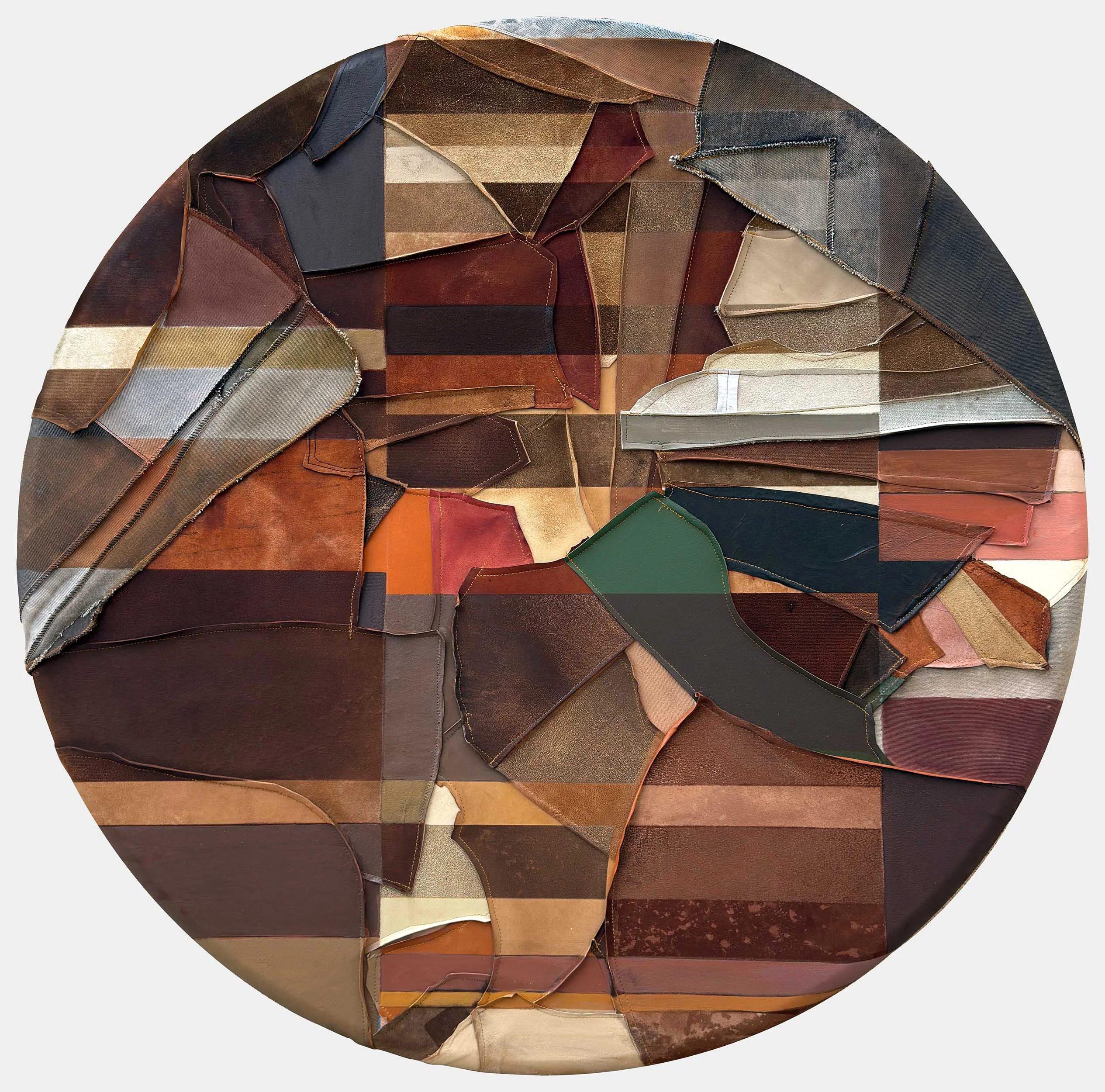
In Pulse, Azulay continues his tactile investigation into rhythm, presence, and internal awareness through a new visual lexicon. Departing from the circular motifs that have long characterized his practice, this series marks a formal and emotional shift toward linear structures that foreground organic, undulating intervals. This visual language that feels less enclosed, more open to interruption, improvisation, and directional flow. This evolution parallels the artist’s own trajectory from anxiety and constraint toward clarity, forward motion, and presence
Azulay’s materials—hand-cut textiles, repurposed leathers, and layered threads—are composed with a deliberate sensitivity to both repetition and variation. The surface of each work is constructed through a process of incremental assembly, where stripes appear not as decorative pattern but as registers of tempo, irregular yet precise. The resulting compositions suggest an embodied rhythm discovered and refined through the act of making
Despite their outward simplicity, the works in Pulse are charged with quiet complexity. The stripes vary in width, orientation, and density, generating subtle visual tensions that mirror the irregularities of lived experience. In this way, Azulay challenges the viewer to slow down—to move beyond the immediate graphic impact and engage with the layered nuances of material, rhythm, and repetition. Each work is an invitation to listen, to feel, and to resonate with the pulse that surrounds us all
In Rhythm, Azulay returns to the circular format that has long shaped his visual language, recontextualizing it within the evolving conceptual framework of the Pulse series. The work becomes a site of inward attention that invites close engagement with the body’s often-overlooked internal tempo
The circular form functions not as a symbol but as a spatial proposition. It denies hierarchy, center, or endpoint, instead offering an immersive field where rhythm is registered through texture, spacing, and material contrast. Rhythm is less about visual impact than it is about perceptual tuning. The work calls for a kind of listening—through the eyes, through the body—redirecting attention inward, inviting a deeper awareness of self
